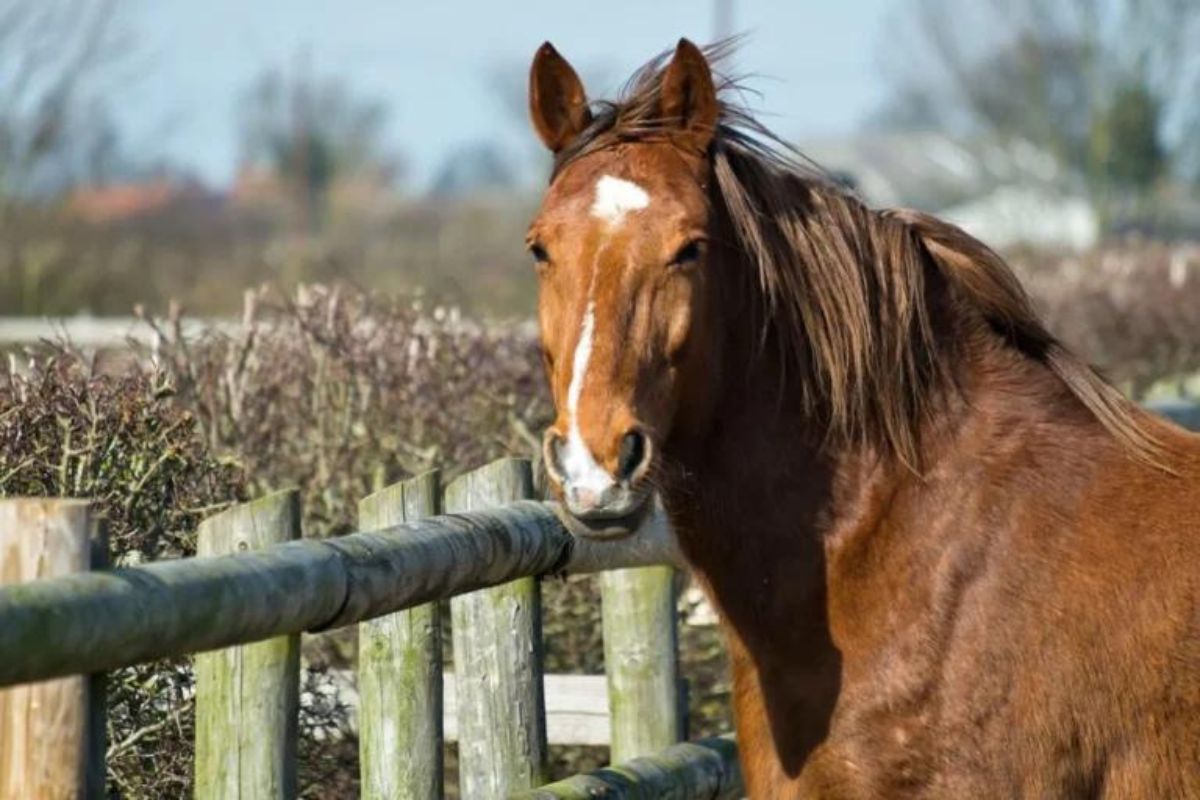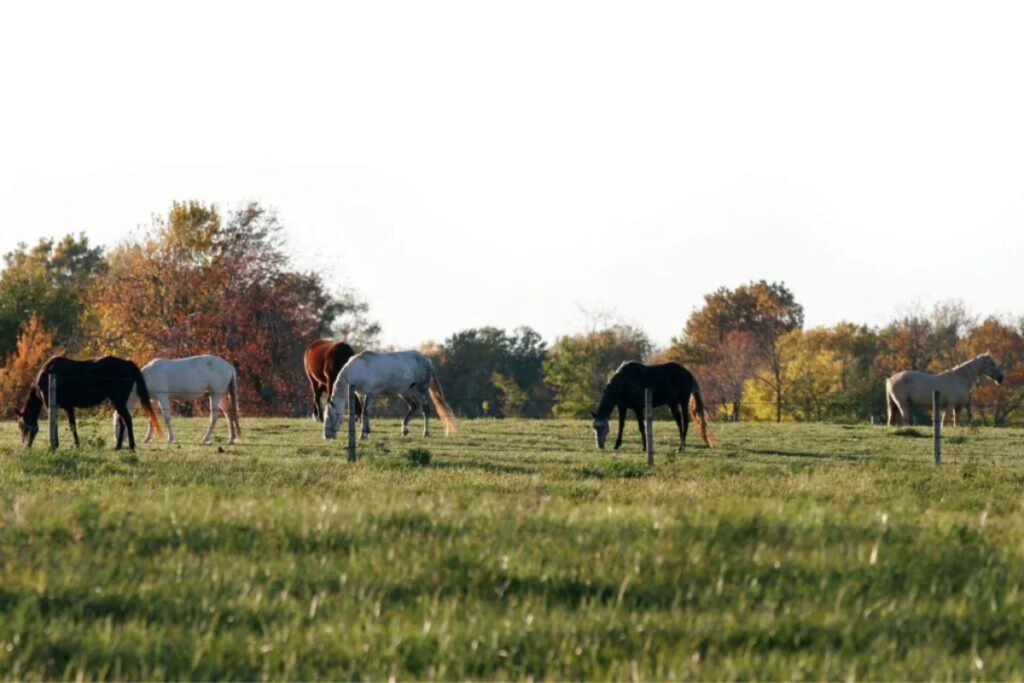Menu

Do you have a horse that too often fancies the grass is greener on the other side? Horses going through the fence aren't exactly uncommon during this time of year. The dreary weather and lack of fresh grass in the paddock can make the horses feel bored and believe that what's happening "over there" is much more appealing than what's occurring within the paddock. To prevent your horse from sneaking through it, we're giving you a range of advice, essentially about keeping the horse occupied.
A bleak earth paddock isn't particularly inspiring, so it's a great idea to make it as appealing as possible. The best way is to serve a delicious portion of high-quality forage, so your horse can stand and chew on something throughout the day. Make sure to get your forage analysed, so you incorporate it into the horse's total energy intake and other vitamin and mineral intakes.
Horses can quickly gobble up a large pile of hay or silage. It can seem pointless when you faithfully carry enormous amounts of forage out to the dears, and after an hour, it's all gone. Therefore, you could benefit from investing in a slow feeder for the paddock, which significantly extends the horse's chewing time. Slow feeders are available on various webshops for horse products. However, be aware not to hang the slow feeder too high or too low, as it could result in a sore neck or the risk of a shoe getting stuck.
While many horse people primarily attribute younger horses to playing in the paddock, the older ones also need to join in. Play can include various balls with "handles" that horses can grab with their mouths and toss around a bit.
A herd without too much rotation or too many external disturbances is clearly preferable. Horses depend on each other and naturally need to trust their herd members to survive. If new horses are constantly entering the paddock, there will always be unrest because the horse has to go through socialisation. At the same time, it's also wise to place a paddock in less noisy surroundings, where sudden loud noises won't occur, ultimately creating unrest.

Horses have a sense of time and are creatures of habit. This means that as a horse owner, you create the least disturbance by feeding at around the same time every day. This way, the horses know when to get "excited", so they don't think it's feeding time every time they see you.
When a new member joins the herd, the introduction should ideally be quiet and calm. Some have had success with showing the horse the fence before it is introduced to the new herd. This is said to reduce breakouts because the horse is aware of where the fence is. After the fence has been shown, most people simply let their horse into the new herd, and this usually works fine. However, the leading horse might react, and in this case, it's smart for the new horse and the leader to meet first, and then the rest of the herd is introduced. If the leading horse has a fiery temperament, it might be a good idea to allow the new member to greet the leader first, then the rest of the herd, and finally, everyone is released together.
Especially in relation to feeding, it's also a good idea to position the gate in a smart location in relation to the stable. There should be plenty of space around it so that the horses can move away and you don't get squashed. It should also be close to the stable so you don't have to walk long distances with, for example, hay or wrap, while the horses are running around in the paddock.
Read also: Malgré Tout’s Checklist for the Summer
Not all horses are thrilled to be left alone in a paddock or perhaps without their best paddock mate. However, most of them learn over time when they find out that their "friend" will return. Others struggle with the situation throughout their lives. Of course, a lot of training is needed, as well as a good, sturdy fence with a strong electric current to command respect. If the horse is in complete panic, an electric fence won't do much to keep the horse in, and it could cause damage to the horse if it runs through it. One method of training could be to gradually teach the horse to be alone, starting with only removing the friend for a few seconds at first and slowly increasing the time you are away. It's a good idea to add appetizing roughage to the paddock to keep the uncertain horse busy and possibly have someone else feed it with concentrate (if it has to be completely alone in the paddock). This way, the horse associates being left behind with something positive.
All in all, the most important thing you can do is to make the paddock inviting for your horse, especially in winter. Good straw feed, toys, and a shelter all contribute to increasing the chances of your horse staying on the right side of the fence and not getting bored. You should also be aware that both thick winter fur and blankets reduce sensitivity to an electric fence, so you'd be wise to ensure a good volume on your electric fence. It's also very important to maintain the fence. If you have a lot of tall grass, bushes, broken posts, a loose fence, or anything else that can divert the current, the horse will find it easier to get through it.